Two industrial models showing internal components.
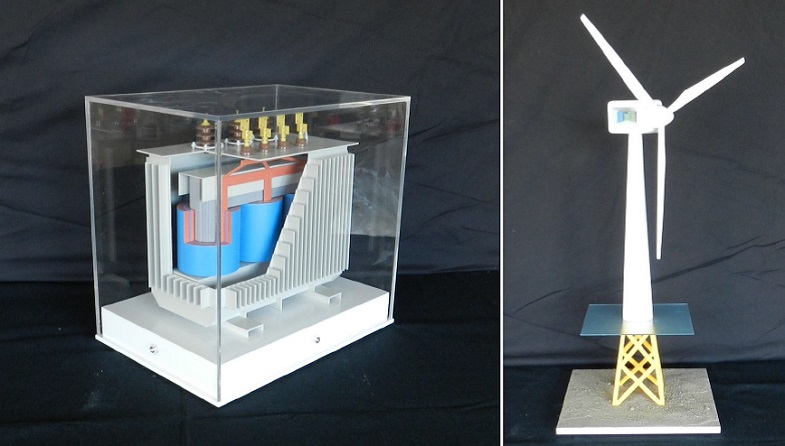
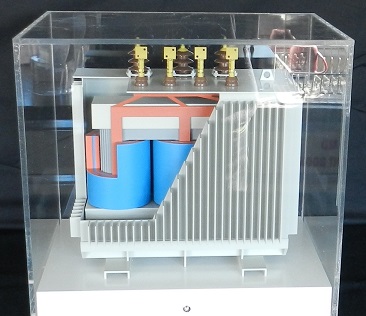
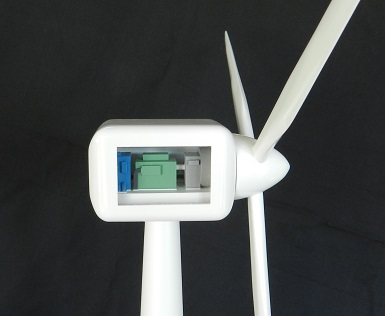
SSE, one of the UK’s biggest energy suppliers commissioned us to help create these two demonstration models for use in their educational program in schools. After exploring several different designs we advised them which options were practical to build and also achievable within their fixed budget. The models incorporate cut-away views showing simplified representations of the internal components of a wind turbine and transformer. The wind turbine model is actually designed as six sections that can be easily fitted together to demonstrate how wind turbines are constructed.
Overview model and detail model.
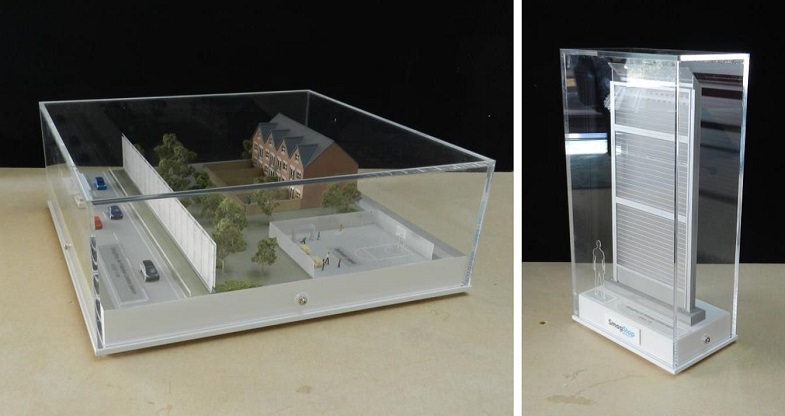
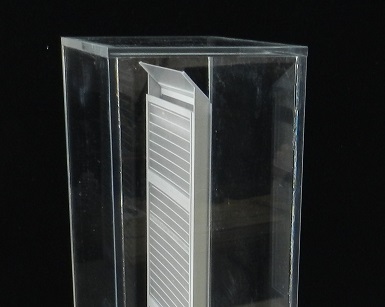
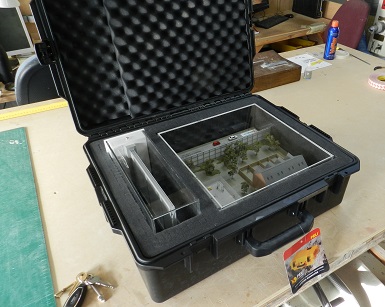
The original brief for this project was for a small, easily portable model of a typical noise barrier installation but as the project progressed the client realised how useful it would be to also have a larger scale model showing a single barrier section. This would allow the salesman to point out small but important structural details that improved the overall performance of the barrier, not just for noise reduction but also to reduce the pollution levels from vehicle exhausts. We were happy to accommodate this extra requirement and even managed to adapt the original travel case to fit both models (see above pic).
Two industrial models shipped to Munich.
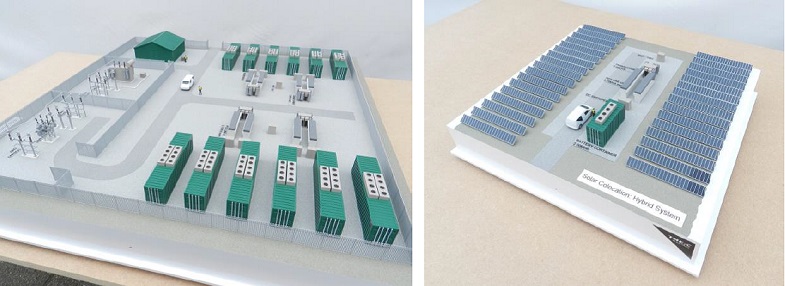
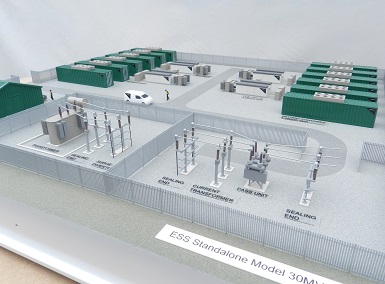
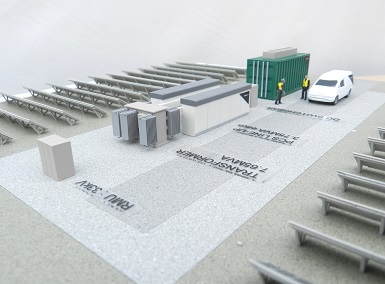
We recently completed these two models of different types of transformer sites for use at a trade event in Munich. At 1:100 scale we had to simplify some of the smaller detailed elements but it was important that all of the main components were made to a fully recognisable level. Apart from producing the models we also provided custom-built flight cases and arranged shipping via airfreight to get the models to Munich in plenty of time for the show.
Interactive industrial model at 1:250 scale
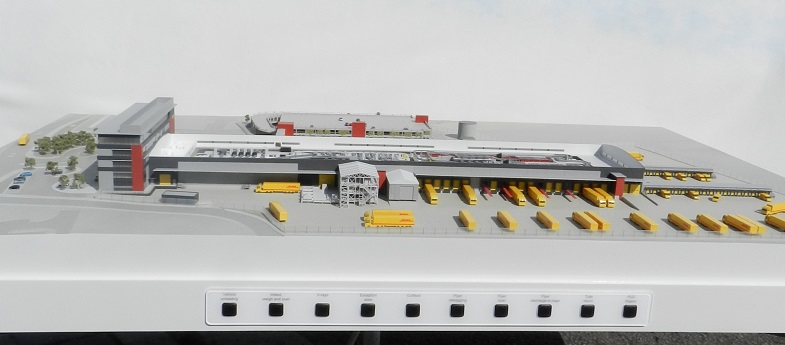
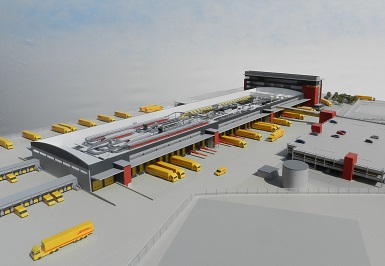
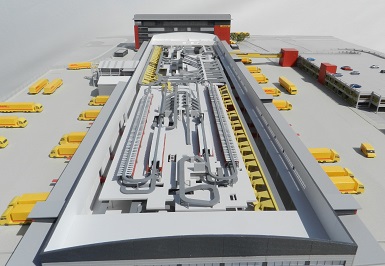
When the guys at DHL (UK) spotted we’d made models for both UK Mail and Hermes they knew we were the right company to supply a high quality model of their brand new southern depot at Poyle, near Windsor. Like the UK Mail and Hermes models, this needed to be a “roof-off” view of the building showing the huge investment in sophisticated sorting machinery within the new depot. DHL actually went a step further and asked us to make the model interactive so that ten specific areas of the machinery could be illuminated individually at the touch of a button (you can see the buttons in the main pic above). The most difficult part of this project was deciphering the CAD info for the machinery and then modelling the complex industrial components to a slightly simplified but recognisable level. We then had to work out how to build in the LEDs so that only the relevant areas lit up. All in all, it was a very technically demanding brief but DHL were very clear what they wanted and we delivered!
Stylised internal view of manufacturing plant.
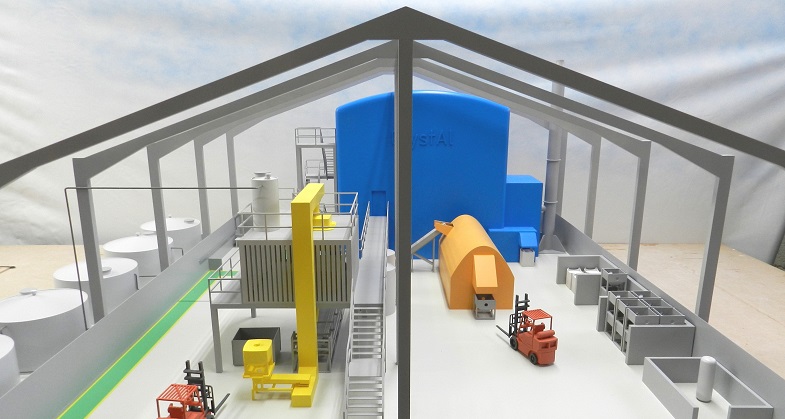
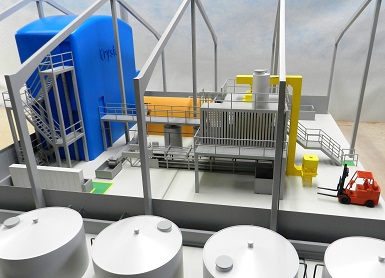
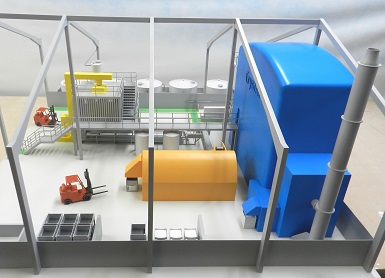
The brief for this project was to create an eye catching but very stylized representation of this proposed factory layout. The client didn’t want too much detail because many of the manufacturing processes were confidential. At approximately 1.2m x 1m and 700mm high, this was a large, technically challenging model that needed to be strong enough to withstand frequent shipping to trade shows and exhibitions across Europe. We added strength by building in steel reinforcement for all the major components which were then fixed through to the underside of the structural base. We also supplied a Perspex cover and sturdy white plinth that could be “flat-packed” under the model in a purpose-built, high quality flight case.